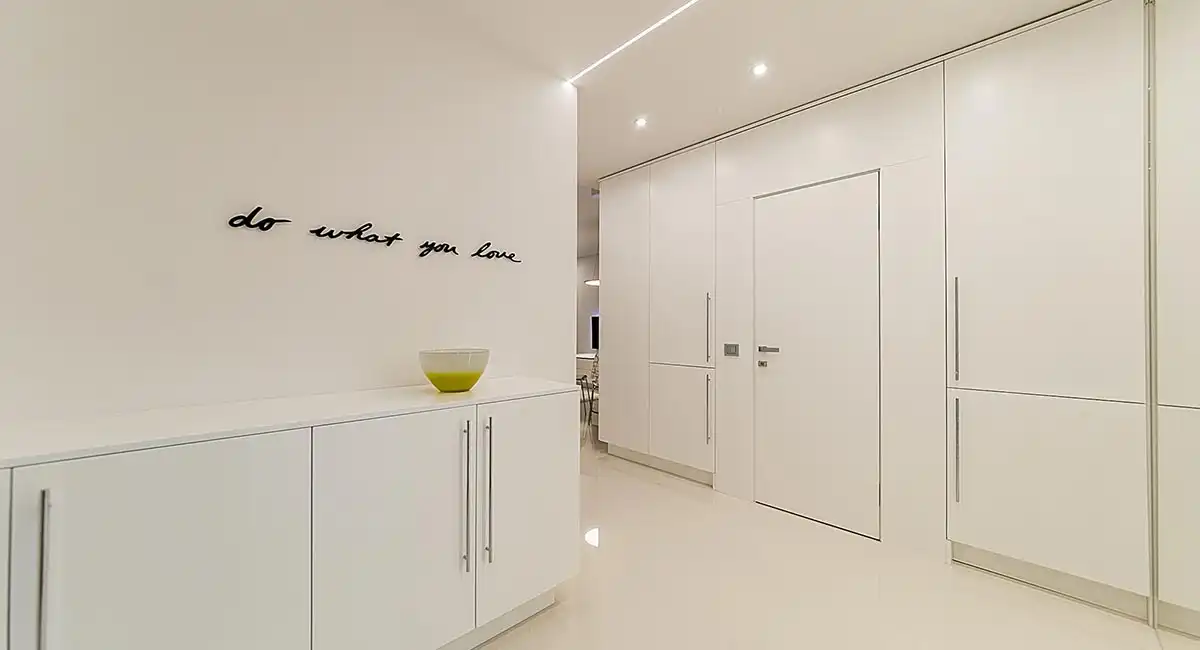Why PVC Foil is the Ideal Material for Your Home’s Interior Walls and Ceilings
Why PVC Foil is the Ideal Material for Your Home’s Interior Walls and Ceilings

When it comes to making your home more appealing, you will want to find a material that will not only enhance the overall look of your home, but also last a long time. The type of materials that you can use for the interior walls and ceilings of your house will depend on a few factors. These include durability, eco-friendliness, and price.
Durability
PVC Foil is a strong and durable material that can be used for interior walls and ceilings. This type of material is available in a wide variety of textures. It is perfect for bathrooms, kitchens, and other high-traffic areas.
There are many reasons why you should choose PVC for your next project. It is very durable, lightweight, and easy to clean. Plus, it can be recycled.
Whether you’re looking to install PVC panels in your home or office, they are a practical, cost-effective choice. You can also customize your wall panels with decorative designs, prints, mosaic patterns, and woven images.
In addition to being extremely durable, PVC is fire-resistant and easy to maintain. It doesn’t mold or absorb water. If you have a project that requires a new installation, PVC panels can be easily installed and dismantled.
In addition, there are certain types of PVC that have good electrical insulation properties. They are often used for power distribution and wiring in homes and other buildings.
PVC is also a versatile polymer that is able to be used for a wide range of applications. This material can be found in a number of products, including medical devices, drug delivery systems, and surgical instruments.
The PVC industry is a global economic contributor. It provides a safe working environment and employment opportunities for many people.
Another advantage of using PVC is that it is completely recyclable. It is also known for its long life. Depending on the types of PVC you choose, it can last up to 100 years.
While some competing materials claim environmental advantages over PVC, these claims are usually based on misconceptions or biased opinions.
Eco-friendliness
PVC Foil is a highly durable and insulating material for your interior walls and ceilings. It offers great impact strength and a good vapour barrier.
Using PVC Foil in your home is a great way to save energy and money. You will also be doing your part to protect the environment.
PVC is a durable and lightweight polymer. Depending on the type you choose, you can expect it to last for many years. And it’s recyclable.
Another good thing about PVC is that it is light and easy to install. This makes it a popular choice for electrical wiring and plumbing in homes.
PVC is available in a variety of colors and finishes. For example, you can get a plank groove pattern or a wooden texture that mimics the look of real wood. These are great in bathrooms and kitchens.
Some of the most common colors for ceilings are shades of white. But it’s important to use the right insulation to save energy.
Another benefit of using PVC for your home’s insulation is that it’s affordable. Many insulation products are made from recycled materials, which reduces the amount of waste that is produced.
While choosing insulation, you should also consider the type of barrier you want. Choosing the wrong type can lead to more expensive electricity bills. To make sure you’re getting the most value from your investment, you should consider the temperature of your home, as well as the climate in your area.
Lastly, you should consider the quality of the materials you choose. Aside from being eco-friendly, they should also be safe for your family. Choose materials that are non-toxic and recyclable.
Plasticisers used in PVC products
Plasticisers are additives that increase the flexibility and mechanical properties of PVC. They are also used to enhance the UV resistance of the polymer. Depending on the type, they may be bio-based or partially bio-based. There are a number of common plasticisers that are used for interior walls and ceilings.
Di-2-ethylhexyl phthalate is one of the most widely used plasticizers in PVC. It offers good gelling, flexibility, electrical properties, and is odorless and colorless. This molecule has an ion exchange ability that helps to improve the flow of the polymer.
The low-cost, light-weight, and durable nature of PVC makes it ideal for construction applications. Flexible PVC is frequently used in carpet backing and upholstery textiles, as well as in acoustic ceiling surfaces.
Benzoate and dibenzoate esters are highly solvating plasticisers that are effective in lowering the viscosity of the PVC resin. However, they are not generally considered as primary plasticizers for PVC.
There are several types of vegetable oil derivatives that are used as plasticizers. Some of them are derived from renewably sourced alkanoic acids and have been used in a variety of building & construction end uses. In addition to this, bio-based plasticizers are derived from renewably sourced isosorbides.
Polyvinyl chloride is a common compound used for films, pipes, and electrical insulation. Other applications include roofing materials, flooring, and window profiles. Several optional additives are available to further increase the flexibility of PVC. These additives can include UV stabilisers, fillers, and impact modifiers.
Another important factor to consider when choosing a plasticizer is compatibility with the polymer. If there is incompatibility, it can lead to exudation, cracking, or migration. Also, the temperature and humidity of the environment can change over time, and this can affect the migration or migration of a plasticizer.
False ceiling rate per sq ft
The price of false ceiling varies from region to region. Generally, false ceiling is priced based on the material used. It also includes the labour costs involved.
Gypsum and Plaster of Paris are the most common materials used for False Ceilings. These materials are durable and easy to maintain. However, they are also expensive. If you want to save money and get the best False Ceilings, opt for PVC.
PVC false ceilings are becoming more and more popular in the market because of their durability and easy maintenance. They are highly waterproof and are also termite-proof. Also, they are easily installed. You can use PVC false ceilings for commercial or residential applications.
In addition, you can find a variety of colours and shapes for your PVC False Ceiling. This is an excellent way to hide a wall or ceiling that looks dull.
Another advantage of PVC false ceilings is that they are easy to install. Moreover, they can be polished and painted. Therefore, they can cover any defect.
The cost of PVC false ceilings varies based on the material. Usually, they are used in commercial buildings. A typical False Ceiling rate per sq ft is between Rs75 and Rs120.
However, the price is higher if you opt for a combination of gypsum and other materials. For example, if you opt for a laminate ceiling, it will cost you between Rs700 and Rs920. Similarly, if you choose to use wood for your False Ceiling, you will have to spend around Rs350 to Rs600.
Although it is not the most common option, PVC false ceilings are a popular choice among many property owners. Whether you have a budget or not, these options are worth considering.




